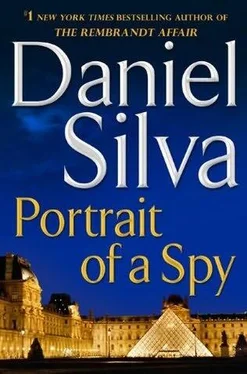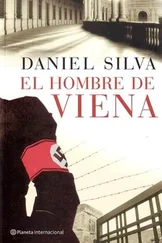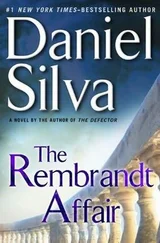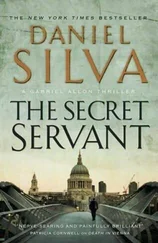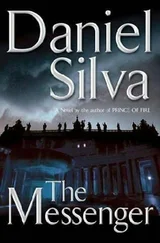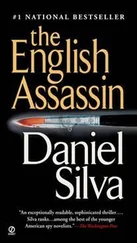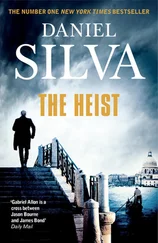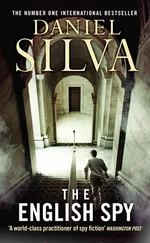1 ...7 8 9 11 12 13 ...84 After the Twombly, it was the Lichtenstein, followed by the Basquiat, the Diebenkorn, the De Kooning, the Johns, the Pollock, and a parade of Warhols. Each work fetched more than the presale estimate and more than the previous lot. It was no accident; Hunt had cleverly stacked the deck to create an ascending scale of excitement. By the time Lot 12 slid onto the display case, he had the audience and the bidders exactly where he wanted them.
“On my right we have the Rothko,” he announced. “Shall we start the bidding at twelve million?”
It was two million above the presale estimate, a signal that Hunt expected the work to go big. Lovegrove drew a mobile phone from the breast pocket of his Brioni suit jacket and dialed a number in Paris. Hamdali answered. He had a voice like warm tea sweetened with honey.
“My client would like to get a sense of the room before making a first bid.”
“Wise move.”
Lovegrove placed the phone on his lap and folded his hands. It quickly became apparent they were in for a tough fight. Bids flew at Hunt from all corners of the room and from the Christie’s staff manning the telephones. Hector Candiotti, art adviser to a Belgian industrial magnate, was holding his paddle in the air like a crossing guard, a blusterous bidding technique known as steamrolling. Tony Berringer, who worked for a Russian aluminum oligarch, was bidding as though his life depended on it, which was not beyond the realm of possibility. Lovegrove waited until the price reached thirty million before picking up the phone again.
“Well?” he asked calmly.
“Not yet, Mr. Lovegrove.”
This time, Lovegrove kept the phone pressed to his ear. In Paris, Hamdali was speaking to someone in Arabic. Unfortunately, it was not one of the several languages Lovegrove spoke fluently. Biding his time, he surveyed the sky suites, searching for secret bidders. In one he noticed a beautiful young woman holding a mobile phone. After a few seconds, Lovegrove noticed something else. When Hamdali was speaking, the woman was sitting silently. And when the woman was speaking, Hamdali was saying nothing. It was probably a coincidence, he thought. But then again, maybe not.
“Perhaps it’s time to test the waters,” suggested Lovegrove, his eyes on the woman in the skybox.
“Perhaps you’re right,” answered Hamdali. “One moment, please.”
Hamdali murmured a few words in Arabic. A few seconds later, the woman in the skybox spoke into her mobile phone. Then, in English, Hamdali said, “The client agrees, Mr. Lovegrove. Please make your first bid.”
The current bid was thirty-four million. With the arch of a single eyebrow, Lovegrove raised it by another million.
“We have thirty-five,” said Hunt, in a tone that indicated a serious new predator had entered the fray. Hector Candiotti immediately countered, as did Tony Berringer. A pair of sparring telephone bidders pushed the price across the forty-million-dollar threshold. Then Jack Chambers, the real estate king, casually bid forty-one. Lovegrove wasn’t terribly worried about Jack. The affair with that little tart in New Jersey had cost him dearly in the divorce. Jack wasn’t liquid enough to go the distance.
“The bid is forty-one against you,” Lovegrove murmured into the telephone.
“The client believes there is a great deal of posturing going on.”
“It’s an art auction at Christie’s. Posturing is de rigueur.”
“Patience, Mr. Lovegrove.”
Lovegrove kept his eyes on the woman in the skybox as the bidding cracked the fifty-million-dollar threshold. Jack Chambers made a final bid at sixty; Tony Berringer and his Russian gangster did the honors at seventy. Hector Candiotti responded by waving the white flag.
“It looks like it’s down to us and the Russian,” Lovegrove said to the man in Paris.
“My client doesn’t care for Russians.”
“What would your client like to do about it?”
“What is Rothko’s record at auction?”
“Seventy-two and change.”
“Please bid seventy-five.”
“It’s too much. You’ll never—”
“Place the bid, Mr. Lovegrove.”
Lovegrove arched an eyebrow and raised five fingers. “The bid is seventy-five million,” said Hunt. “It’s not with you, sir. Nor with you. Seventy-five million, for the Rothko. Fair warning now. Last chance. All done?”
Crack .
A gasp rose in the room. Lovegrove looked up at the skybox, but the woman was gone.
Chapter 9
The Lizard Peninsula, Cornwall
WITH THE APPROVAL OF SCOTLAND YARD, the Home Office, and the British prime minister himself, Gabriel and Chiara returned to Cornwall three days after the bombing in Covent Garden. Madonna and Child with Mary Magdalene , oil on canvas, 110 by 92 centimeters, arrived at ten the following morning. After carefully removing the painting from its protective coffin, Gabriel placed it on an antique oak easel in the living room and spent the remainder of the afternoon studying the X-rays. The ghostly images only strengthened his opinion that the painting was indeed a Titian, and a very good Titian at that.
It had been several months since Gabriel had laid hands on a painting, and he was eager to begin work right away. Rising early the following morning, he prepared a bowl of café au lait and immediately threw himself into the delicate task of relining the canvas. The first step involved adhering tissue paper over the image to avoid further paint losses during the procedure. There were a number of over-the-counter glues suitable for the task, but Gabriel always preferred to mix his own adhesive using the recipe he had learned in Venice from the master restorer Umberto Conti—pellets of rabbit-skin glue dissolved in a mixture of water, vinegar, ox bile, and molasses.
He simmered the noxious-smelling concoction on the kitchen stove until it was the consistency of syrup, and watched the morning news on the BBC while waiting for the mixture to cool. Farid Khan was now a household name in the United Kingdom. Given the precise timing of his attack, Scotland Yard and British intelligence were operating under the assumption it was linked to the bombings in Paris and Copenhagen. Still unclear was the terrorist affiliation of the bombers. Debate among the television experts was intense, with one camp proclaiming the attacks were orchestrated by al-Qaeda’s old-line leadership in Pakistan and another declaring that they were clearly the work of a new network that had yet to produce a blip on the radar screens of Western intelligence. Whatever the case, European authorities were bracing for more bloodshed. MI5’s Joint Terrorism Analysis Center had raised the threat level to “critical,” meaning another attack was expected imminently.
Gabriel focused most intently on a report dealing with questions over Scotland Yard’s conduct in the minutes before the attack. In a carefully worded statement, the commissioner of the Metropolitan Police acknowledged receiving a warning about a suspicious man in an oversized coat headed toward Covent Garden. Regrettably, said the commissioner, the tip did not rise to the level of specificity required for lethal action. He then confirmed that two SO19 officers had been dispatched to Covent Garden but said they had no choice under existing policy but to hold their fire. As for reports of a weapon being drawn, police had questioned the man involved and determined it was not a gun but a camera. For reasons of privacy, the man’s identity would not be revealed. The press appeared to accept the Met’s version of events, as did the civil libertarians, who applauded the restraint shown by the police even if it had meant the loss of eighteen innocent lives.
Gabriel switched off the television as Chiara entered the kitchen. She immediately opened a window to drive out the stench of the ox bile and vinegar and berated Gabriel for fouling her favorite stainless steel saucepan. Gabriel only smiled and dipped the tip of his forefinger into the mixture. It was now cool enough to use. With Chiara peering over his shoulder, he applied the glue evenly over the yellowed varnish and adhered several rectangles of tissue paper to the surface. Titian’s handiwork was now invisible and would remain so for the next several days, until the relining was complete.
Читать дальше
Конец ознакомительного отрывка
Купить книгу
